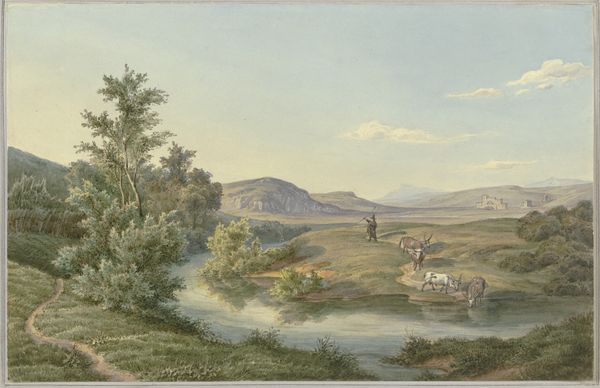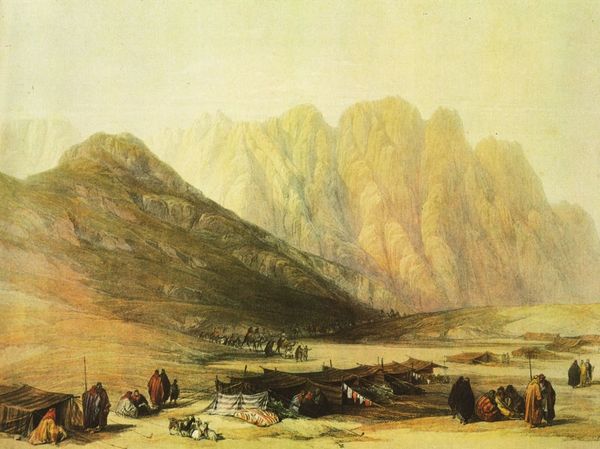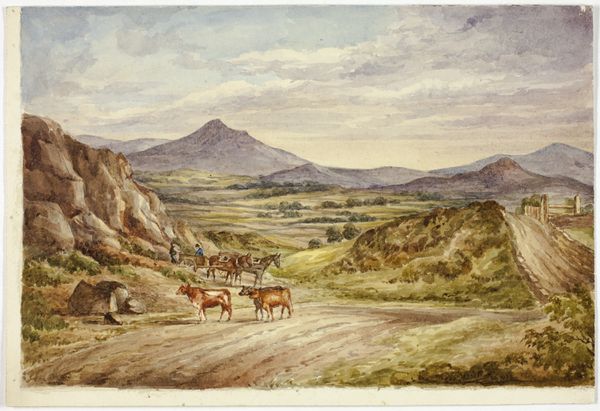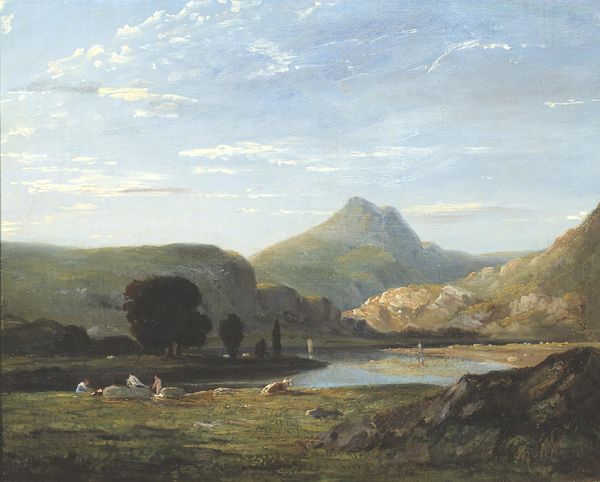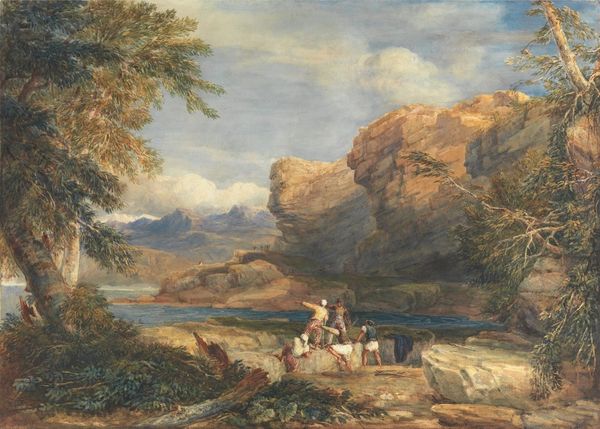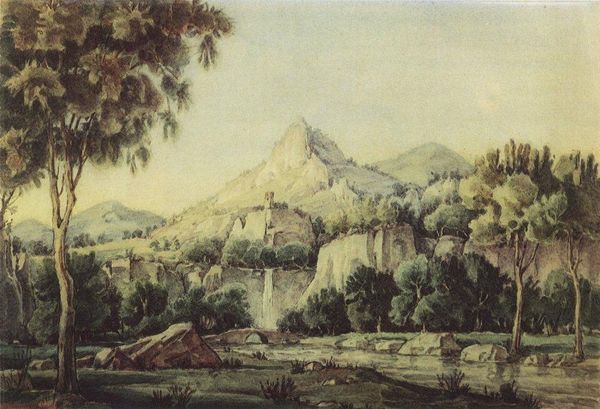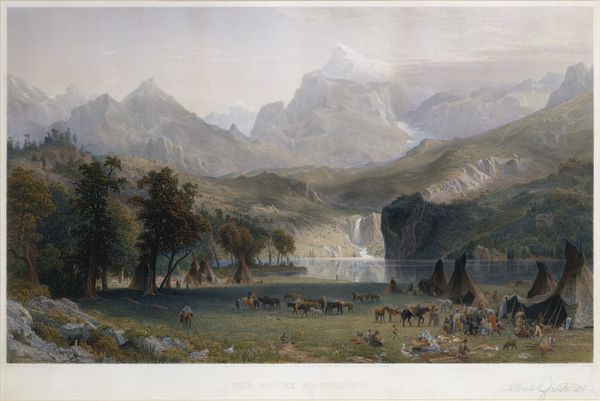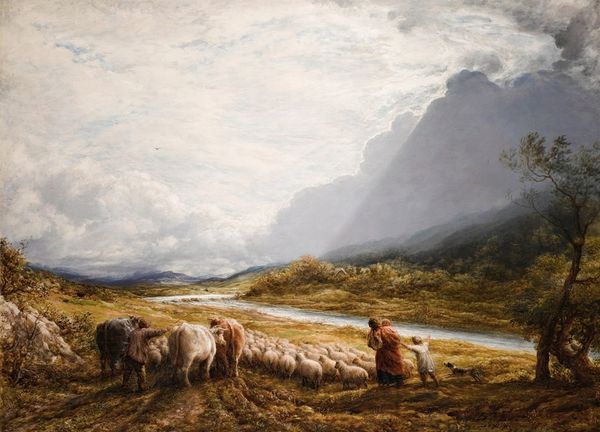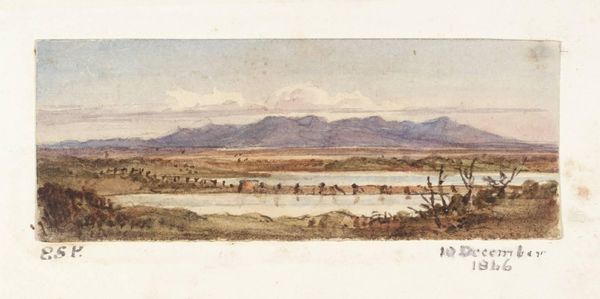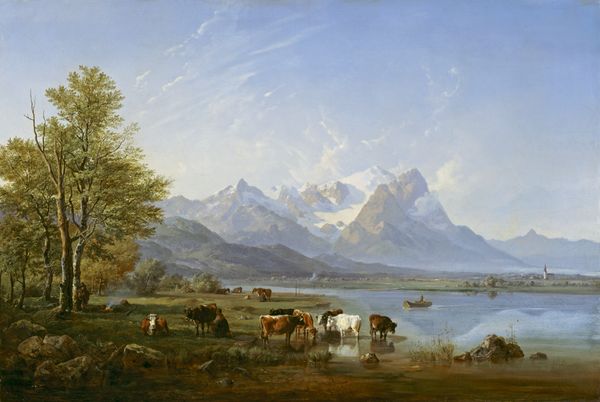
painting, watercolor
#
narrative-art
#
animal
#
painting
#
landscape
#
figuration
#
watercolor
#
romanticism
Copyright: Public domain
Karl Bodmer created this watercolor painting titled "Landscape with Buffalo on the Upper Missouri" during a time of significant change for the Indigenous peoples and natural landscapes of the American West. Bodmer, a European artist, captured what he saw as an untouched, exotic land. However, this view was complicated by the presence and displacement of Native American tribes. The image evokes a sense of the sublime, emphasizing the vastness of the landscape and the seemingly endless herds of buffalo. Yet, these romantic portrayals often overlooked the complex social, cultural, and ecological realities, contributing to a narrative of exploration and dominance. Consider how this image might have been received by different audiences: European settlers, Indigenous communities, and even later generations. What does it mean to depict a landscape as "untouched" when it has been inhabited and cared for by Indigenous peoples for centuries? Bodmer's work invites us to reflect on the power dynamics inherent in representation and the importance of understanding multiple perspectives when viewing historical art.
Comments
No comments
Be the first to comment and join the conversation on the ultimate creative platform.

